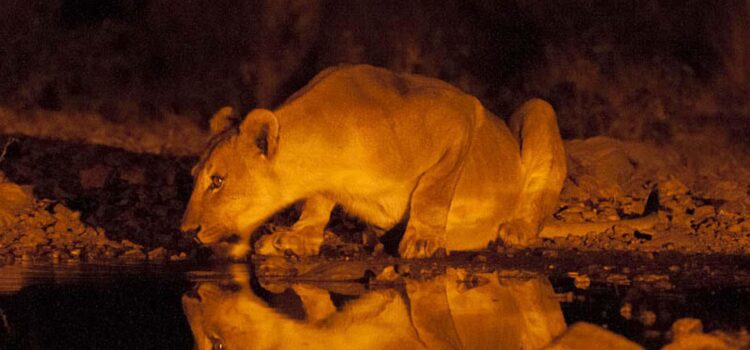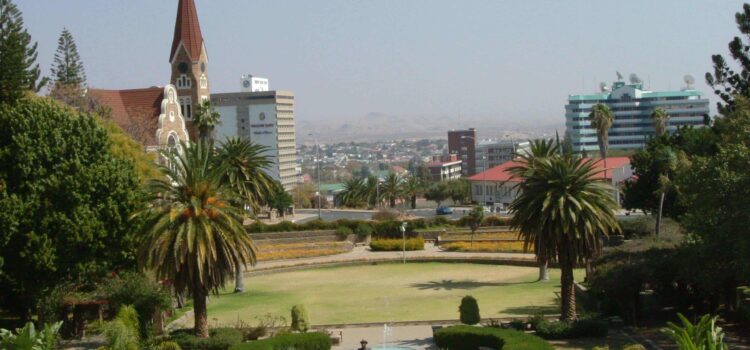Originally published by The AfriCat Foundation and Okonjima in their September 2018 newsletter, reproduced here with kind permission from The AfriCat Foundation.
“Shy, elusive and misunderstood, brown hyenas are rarely seen yet are widely persecuted across their range by farmers for real or perceived involvement in human wildlife conflict. Numbering between 566-2,440 adult individuals in Namibia, the species is listed as Near Threatened and will increasingly rely on protected areas for its persistence”.
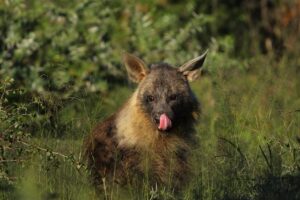
Having chosen to protect its wildlife populations from the threats such as human-wildlife conflict and poaching, the Okonjima Nature Reserve is fully enclosed with an electric fence. Whilst enclosed reserves bring the advantage of a safe and secure life for wildlife, they simultaneously present threats in the form of inbreeding due to the normal processes of immigration and emigration being stopped, population sizes exceeding natural carrying capacity and intensified competition with other species for the limited resources within the area. As a consequence, the wildlife living within the Okonjima borders needs managing to ensure their survival and sustainability.
The Okonjima brown hyena population is naturally occurring, with no management actions being conducted on the population since the erection of the electric fence in 2010. Currently little is known about the population and thus in January 2018, a large scale brown hyena research project was launched. Using GPS collars to collect high-resolution spatial data and camera traps monitor brown hyenas across the reserve, the project aims to estimate population size, social structure, home range size and activity patterns of the species on Okonjima. Given the constraints imposed by the fence, brown hyena behavior may be expected to differ from free-ranging individuals and thus this specialized behavioral ecology needs to be understood in order to make effective management decisions.
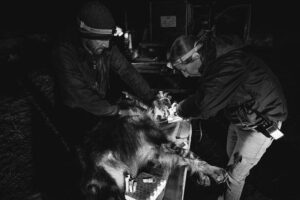
During the first six months of the project, a total of eight adult brown hyenas were free-darted and fitted with Wireless Wildlife GPS collars, with another two collars to be fitted in the coming weeks. The eight collared individuals comprise four males and four females, darted at sites across the reserve. Little variation was seen in body mass; 42.65 – 46.30 kg and two of the males had fresh bite wounds on the face and neck and old scars around the neck region. The collars are set to collect high resolution spatial data; one position every 30 minutes during the night, when the hyenas are most active and one position every two hours during the day. To date we have 14,543 data points from our eight collared hyenas, this data is already revealing detailed insights into the lives of these elusive animals; showing us where the animals have their communal dens, giving us accurate estimates of home range sizes and activity patterns as well as the social structure of the population.
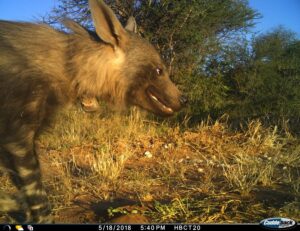
Thanks to the Namibian Wildlife Conservation Trust, funding was gained for purchase of 40 infra-red Cuddeback camera traps, protective boxes, batteries and SD cards. Varta Consumer Batteries Namibia kindly subsidized the cost of the batteries as part of their commitment to wildlife conservation within Namibia. These camera traps have now been set-up across the reserve to monitor brown hyena activity. Brown hyenas have individually unique front leg stripe patterns, which can be used to create an identification database from the camera trap images. Being brown and beige, the leg stripe patterns can often come out blurred on infra-red camera trap images if the animal is walking past the camera trap, therefore cameras were mainly set up at latrines and paste marks.
These are important areas where brown hyenas are most likely to stop to perform olfactory marking behaviors, thus increasing the time the animal is front of the camera and maximizing the probability of capturing clear leg stripe photos. So far 4,037 brown hyena images have been captured on camera trap and now the cataloguing of these images into an individual database is in progress. The next three months of data collection will be used for population modelling using newly developed spatial capture recapture models, which will give us the first brown hyena density estimates for the reserve. Along with brown hyena, a wide variety of wildlife species have been captured on camera trap, ranging from springhare to giraffe. This ‘by-catch’ data set is highly valuable and will be analyzed during the coming months.
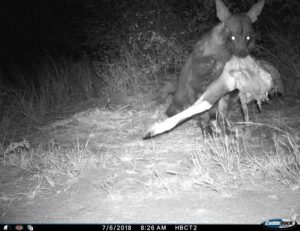
Inbreeding of the brown hyena population is a particularly concerning potential issue, especially given the results of a recent research paper which indicated brown hyena natural genetic diversity is lower than previously believed. Therefore, part of the brown hyena research will include a genetic diversity assessment of the population in collaboration with Panthera. The paste marks which hyenas use to communicate and demark their territory contain genetic material. Therefore, samples from paste marks across the reserve are currently being collected for analysis, as well as genetic samples taken during sedation for collaring. The prevalence of disease within the hyena population is also a matter of concern, as any disease could spread through the population quickly. During sedation for collaring blood samples are taken and these will be tested for various diseases during our annual vet checks in June.
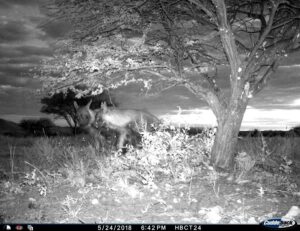
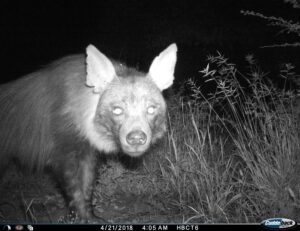
Brown hyena are increasingly persecuted across their range for real or perceived involvement in human-wildlife conflict with farmers, which is the main threat to their conservation. As a result, protected areas such as Okonjima are likely to represent the last strong hold for the survival of the species. Our brown hyena research project will not only allow Okonjima to effectively manage its population; the results will be applicable to enclosed protected areas across southern Africa and become increasingly relevant as the trend for wildlife-proof fencing used by the growing wildlife industry on private lands across southern Africa progresses, which will increasingly fragment wildlife populations. We will be publishing our results in
peer-reviewed scientific journals to ensure the data reaches a wide audience and can implemented in conservation management decisions.
MEET OUR AFRICAT BROWN HYENA RESEARCHER:
Originally from Cheshire in the United Kingdom, Dr. Sarah Edwards first came to Namibia in 2007 and fell in love with the country, its people and wildlife. Having gained a B.Sc in Animal Behavior and Welfare at University Dr. Sarah studied ground squirrels on the NamibRand Nature Reserve for a year before returning to the UK to complete her masters in Animal Behavior at Manchester Metropolitan University.
She then returned to Namibia to work on an environmental impact assessment on the potential impacts of mining on brown hyenas within the Sperrgebiet National Park, with the Brown Hyena Research Project, Luderitz, southern Namibia. After spending a year researching forest ecology in Cambodia, and working on an environmental impact assessment within the Sperrgebiet National Park she returned to Namibia to complete her PhD in human-wildlife conflict on commercial farmlands bordering the Namib-Naukluft and Sperrgebiet National Parks in southern Namibia with the Brown Hyena Research Project.
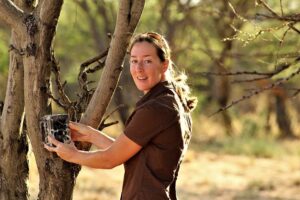
After completion of her PhD, Dr. Sarah was awarded a post-doctoral fellowship with the Center for Wildlife Management of University of Pretoria which she completed in collaboration with the Cheetah Research Project of the Leibniz Institute for Zoo and Wildlife Research in east-central Namibia. During the two year fellowship Dr. Sarah worked on advancing methods for modelling cheetah abundance, spatial density estimation of leopard and serval within Khaudum National Park and leopard occupancy analyze within the Gondwana Canyon Park.
Dr. Sarah will be running the AfriCat brown hyena research project which aims to gain a better understanding of the spatial and social ecology of this misunderstood species when living in a closed reserve.

